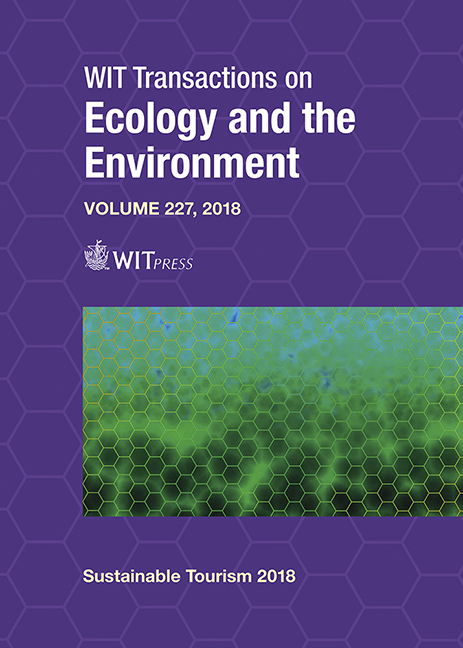ALTERNATIVE TOURISM IN THE BIOSPHERE RESERVE OF VIZCAINO (REBIVI), MEXICO: FACING THE IMPACTS OF CLIMATE CHANGE
Price
Free (open access)
Transaction
Volume
227
Pages
12
Page Range
185 - 196
Published
2018
Paper DOI
10.2495/ST180181
Copyright
WIT Press
Author(s)
ANTONINA IVANOVA, EKATERINE RAMÍREZ, ANGELICA MONTAÑO, RODRIGO SERRANO
Abstract
The Biosphere Reserve of Vizcaino (REBIVI) is the most extensive protected natural area in Mexico. The main economic activities are fishing, aquaculture, alternative tourism, and agriculture. The objectives of the present research are the following: a) Characterize the main alternative tourism activities in the REBIVI, b) Analyze the main impacts of climate change on the alternative tourism in the short and medium term, and c) establish measures of adaptation to these impacts. The methodology applied was: a) research in literature and web pages to locate the main tourism activities in the REBIVI, b) analyze the climate scenarios using GIS geographic information systems, d) determine the main impacts of climate change on the REBIVI, and relate them to alternative tourism activities, c) conduct consultation forums in different locations of the REBIVI to know the perception of the inhabitants on the effects of climate change on tourism resources and d) select adaptation measures and prioritize them, based on multicriteria methodology. The results show the following main threats of climate change: droughts, hurricanes, floods, and sea level rise. The scarcity of water resources can affect the maintenance of pronghorn and bighorn sheep, with relation to water availability and grazing. The recommendation is to carry out water saving programs and build small dams for pluvial water catchment. The hurricanes threaten to be more intense, which would cause change of stream channels that can affect roads and highways. We recommend not building infrastructure near these places. Waters of the Pacific Ocean and the Gulf of California surround the REBIVI, making it vulnerable to sea level rise. The recommendation is to move the infrastructure that is close to the coast and try to build the new tourist infrastructure away from the places prone to flooding. The main resource of attraction for alternative tourism in the REBIVI is the gray whale, for which there is no expected negative impact in general. However, pest’s proliferation with the increase in temperature could affect the whales.
Keywords
alternative tourism, protected areas climate change, adaptation, Mexico





